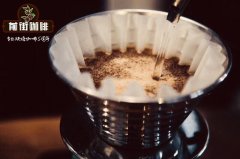Is Yega Xuefei in Ethiopia good? is Yega Xuefei bitter? you don't want to wake up.

Professional coffee knowledge exchange more coffee bean information please follow the coffee workshop (Wechat official account cafe_style)
Qianjie-introduction to Yega Xuefei, Ethiopia
Ethiopia is recognized as the birthplace of coffee. The native Arabica coffee was first found in southern Sudan (according to records), but did not flourish until it spread to Ethiopia.
With the development of the times, in order to promote the uniqueness of coffee in Ethiopia, the Ethiopian government applied for patents on the names of three producing areas in 2004: Yega Xuefei is one of them. Yejia Xuefei, a beautiful mountain stream village, located on the eastern edge of the East African Rift Valley, has been a wetland since ancient times, rich in water resources and fragrant flowers all the year round. Foggy, like spring all the year round, the summer breeze is slow, cool but not hot, rain but not damp, and winter does not cause cold damage.
As early as the 17th century, Ethiopian coffee was mostly picked from wild coffee trees. It was not until the early 19th century that with the increase in output, courtyard coffee and large farm coffee outside forest coffee appeared. At first, it was planted by monastic academics, and later it was responsible for farmers or cooperatives.
Traditionally, Yega Xuefei uses the oldest sun treatment, but due to weather factors, occasional rain affects the sun treatment process. In 1972, in order to ensure the quality of coffee, locals introduced water washing technology from Central and South America. It makes the unique characteristics of jasmine and citrus more clear and refined.
The so-called "Yejiachefi" refers to strong aromas of jasmine, lemon or lime acid, mixed with a small amount of cardamom, nutmeg spices, as well as peach, almond and tea aromas. In addition to the fragrance of flowers, the delicate thickness is like silk massage in the mouth, the touch is wonderful and the return is long.
Yega Xuefei water washing method: use the method of washing and fermentation to remove the skin, pulp and mucous membrane, and wash the coffee beans until they are smooth and clean. after washing, the coffee beans are still wrapped in the pericarp with a moisture content of 50%, and the moisture content must be reduced to 12%, otherwise they will continue to be mellow, moldy and rotten, and the better treatment is to use sunlight to dry, although it will take 1 ~ 3 weeks, but It has a very good flavor and is very popular.
The washing method has a good mellow taste, a high aroma and a lively sour taste. Washed coffee beans are graded into Gr-1 and Gr-2, and the smaller the Arabic numeral is, the higher the grade is. The style of G1 Yega Chefe is distinct, and the flavor of citrus and flowers in the coffee liquid is an irresistible delicacy.
Knowledge: Ethiopia is in the position of meta-ancestor in the coffee industry, is the birthplace of Arabica beans (Arabica), and is currently the largest Arabica producer in Africa. The Kaffa forest in Ethiopia is more known as the "coffee gene bank".
In short: Qianjie is a coffee research hall, happy to share the knowledge about coffee with you, we share unreservedly just to make more friends fall in love with coffee, and there will be three low-discount coffee activities every month. The reason is that Qianjie wants to make more friends drink the best coffee at the lowest price, which has been Qianjie's tenet for 6 years!
END
Important Notice :
前街咖啡 FrontStreet Coffee has moved to new addredd:
FrontStreet Coffee Address: 315,Donghua East Road,GuangZhou
Tel:020 38364473
- Prev

Where is the growing area of Yejia Shefei? How about Yejia Shefei? Rich and complex private flower beds
Professional coffee knowledge exchange More coffee bean information Please pay attention to coffee workshop (Weixin Official Accounts cafe_style) Front Street-Ethiopia Yirgacheffe Introduction Ethiopia Yirgacheffe Coffee is petite, but gentle and delicate, sweet and pleasant. Ethiopia's thousands of years of cultivation and processing tradition have produced high-quality washed arabica beans
- Next

What does Yega Xuefei mean? what kind of coffee beans are suitable for hand-flushing? taste description
Professional coffee knowledge exchange more coffee bean information please follow the coffee workshop (Wechat official account cafe_style) front street-Ethiopia Yega Xuefei introduced coffee originated in Africa in Ethiopia, in this ancient land, gave birth to the magical fruit that has affected the world to this day, when the world
Related
- Beginners will see the "Coffee pull flower" guide!
- What is the difference between ice blog purified milk and ordinary milk coffee?
- Why is the Philippines the largest producer of crops in Liberia?
- For coffee extraction, should the fine powder be retained?
- How does extracted espresso fill pressed powder? How much strength does it take to press the powder?
- How to make jasmine cold extract coffee? Is the jasmine + latte good?
- Will this little toy really make the coffee taste better? How does Lily Drip affect coffee extraction?
- Will the action of slapping the filter cup also affect coffee extraction?
- What's the difference between powder-to-water ratio and powder-to-liquid ratio?
- What is the Ethiopian local species? What does it have to do with Heirloom native species?

